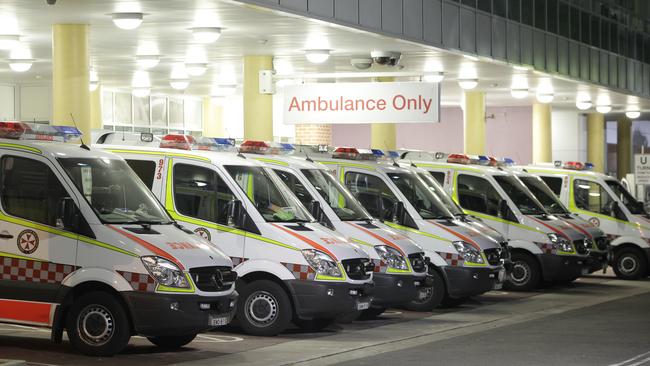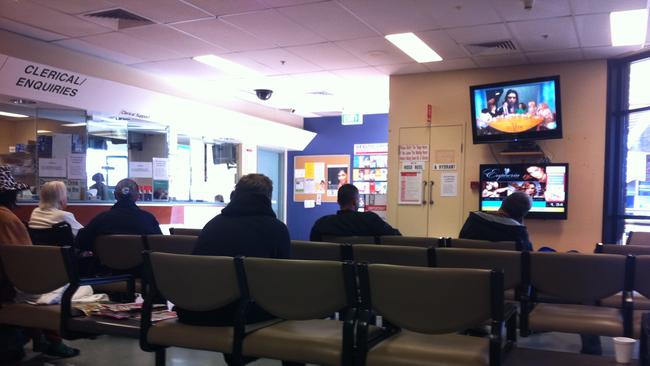Des Houghton: ‘Remarkable lack of vision’ keeping Qld Health in crisis, senior doctors say
Senior doctors say Queensland Health is “lurching from one crisis to another”, with political interference to blame.
Opinion
Don't miss out on the headlines from Opinion. Followed categories will be added to My News.
The number of “adverse events” suffered by Queenslanders in state hospital emergency departments is rising.
And overall health care delivery in hospitals is in decline and “lurching from one crisis to another”.
These are the views of a group of senior doctors with long track records in Queensland Health who have held executive positions at Royal Brisbane and Women’s Hospital, Prince Charles, Princess Alexandra and satellite hospitals including Caboolture, Redlands, Logan.
Problems began in the Beattie era when a “reverse flow” model was introduced, whereby patients attending major hospitals were shunted back to ill-equipped regional hospitals, often with disastrous results.
The doctors also blame political interference for Queensland’s health woes.
And they point to a study written six years ago by Queensland Health’s clinical excellence division that recommended better models of care. The report was ignored.
The report by emergency medicine supremo Dr Chris May and a team of Queensland Health experts including Michele Romeo, Lee Boyce and Tamara Ward, warned that “access block, patient flow, (and) ED (emergency department) congestion” would only get worse. They were on the money. But no one was listening.

“ED congestion is a major patient safety concern associated with poor patient outcomes,” they warned.
“Interventions and policies are needed to address this significant problem.’’
The report proposed a new system of streaming patients so they were not left to linger in waiting rooms.
“EDs will need to change both their structure, including design and resource allocation, models of care and the methods of service delivery,’’ the report said.
The doctors I spoke to said the report was not given any value by a succession of health ministers. And there remains “a remarkable lack of any vision or forward planning on a co-ordinated and cohesive scale”.
It’s a damning reflection on the Palaszczuk government that it failed to read its own reports or heed warnings from it. The AMA has also been critical of bed shortages and congestion in EDs. Queensland has had Labor governments for all but six if the past 30 years. They all mismanaged health.
The doctors spoke to me on the condition of anonymity for fear of reprisals against themselves and those close to them.
The latest in healthcare crises at Caboolture Hospital and recent troubles at PA with spinal injury patients and gynaecological treatments was a sign of “endemic failures in providing high quality and safe care to the people of Queensland over decades”. A woman trapped for hours in a waiting room with vaginal bleeding was a shocking model of care that shamed Queensland.

At the Gold Coast University Hospital there is a backlog of more than 54,000 radiology images that will take months to read.
Blame a shortage of radiologists. More bad planning.
Excessive workloads in emergency departments are blamed for a poor report card from the Australian Institute of Health and Welfare, with adverse events jumping up from 4.8/100 separations in 2008 to 5.4/100 separations in 2016.
“If you are a patient admitted to a hospital you have a one in three chance of an adverse event resulting in no injury and a one in 10 chance of serious adverse event leading to a permanent injury,” a senior doctor said. He said patients were more likely to have an adverse event in a public hospital than a private one.
Treasury papers show this year’s annual health budget allocation was $29bn.
That was 35 per cent of total expenditure. Five years ago it was 30 per cent. At that rate, health expenditure will consume 50 per cent of the entire state Budget by 2030, two years before the Olympic torch is lit.
“Far too much goes into administration instead of clinical need,” said a doctor.

He added: “Queensland healthcare is in this critical situation because of the continual lack of co-ordinated and evidence-based planning to meet future demand.”
Moreover, healthcare has been politicised “with decisions made on political ideology and expediency”.
Politicians want to build trophy hospitals without a guarantee of ongoing funding for staff and beds.
For nearly four decades all health ministers were warned repeatedly that Queensland lacked a sustainable healthcare workforce to meet population growth and demand.
And patients are being harmed as a result.
Failure to resource new hospitals was a major problem.
“It’s political,” said one doctor.
“It’s sucking up to people. (Politicians) are trying to show them they are doing something. So they build hospitals that don’t work.”
Lamentably, hospitals are usually not built with future expansion in mind.
A surgeon and former AMA president told me of another problem. There was a profound doctor shortage because new doctors put more value on work-life balance and were no longer willing to work long hours like their predecessors.
State falls short of thousands of beds
Queensland hospitals are short of 1500 beds, the AMA says.
The Palaszczuk government has pledged to provide more beds by 2026 but has not said how they will be funded.
Doctors talk about rubbery figures from the Labor government. A hospital bed is defined as one allowing an overnight stay and should not be counted as beds if they are chairs, cancer-care recliners and short-stay beds.
Brisbane’s two major hospitals lost beds when the “reverse flow” model was introduced, senior doctors said. “This meant that Princess Alexandra lost 400 beds and the Royal Brisbane and Women’s Hospital lost 600 beds,’’ a senior doctor said.
At the time frontline clinicians warned bed closures would be a mistake. They were ignored.
Planners did not properly consider the increasing population or changes in disease complexity and chronic illnesses.
Nor did they properly consider the “tsunami” of the elderly Queenslanders putting additional strain on healthcare, particularly hospitals, he said.
“Older people use four times more beds than other patients,” a doctor said.
The loss of acute surgical beds has led to a blowout in surgical waiting lists.





